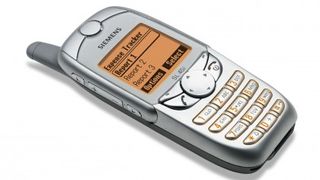How the mobile phone destroyed the MP3 player
The phones that gave us the best sound

It may seem hard to believe now, but in the dark ages of mobile playing music on a phone was unheard of. That is, unless you count rocking out with a low quality ringtone.
These days many people spend more time listening to music on their phones than actually, you know, making calls. The mobile phone, and even more so since becoming smart, has become the dominant portable music player on the planet, overtaking dedicated MP3 players a while ago.
It's no surprise that this happened. Mr Yong-hyuk Na, Senior Researcher at LG Mobile Communications Future Products Laboratory told us: "As the functionality of smartphones has increased, so too has the demand to use their features on the go.
"In particular smartphones are popularly used for listening to music when out and about, avoiding the need to carry multiple devices. Therefore the quality of the audio provided by smartphones has never been more important to consumers."
The quality, popularity and importance of smartphone audio didn't reach this point overnight. It was a gradual process that developed as phones became more advanced and music became more of a focus. Manufacturers and customers alike started to see the potential of phones as music players over the years, but there were five pivotal handsets that really made the difference.
Siemens SL45
MP3 players have been around since 1997, but mobile phones didn't gain the ability to play music until the launch of the Siemens SL45 in 2001.
It's unlikely that Siemens quite realised what it had on its hands with the SL45, but it would pave the way for a new generation of phones that were media players as much as communication tools.
Get daily insight, inspiration and deals in your inbox
Get the hottest deals available in your inbox plus news, reviews, opinion, analysis and more from the TechRadar team.
The four year gap between the launch of the standalone MP3 player and the first phone to feature real music playing capabilities was likely down to technical limitations.
For one thing, mobile phones tended to have small batteries which weren't up to dealing with much more than a few hours of calls. The 540mAh battery in the Siemens SL45 didn't particularly solve that problem, but it was capable of up to five hours of music playback, which made it just about viable as a player.

The other issue, and the one which the SL45 did address, was the fact that most phones had a negligible amount of built-in memory and so were utterly incapable of storing any music.
The Siemens SL45 solved that problem not by upping the amount of onboard memory, but by being the first phone to include a MultiMediaCard slot, finally delivering a phone with a much needed storage boost.
Siemens even went one further by bundling a 32MB card with the phone. Of course that didn't go far, only really allowing for a handful of songs, but that's a handful more than any other phone could accommodate.
MP3 files were copied from a computer to the phone's MultiMediaCard by plugging it in to your computer's serial port, but that's where the next problem came in: transfer rate was painfully slow.
In short the Siemens SL45 was horribly limited compared to dedicated MP3 players of the time, which featured hard drives of multiple gigabytes, longer battery lives and were less terrible to use.
Nevertheless as a proof of concept and a demonstration of what was possible the Siemens SL45 did well, showing consumers and other phone manufacturers that in theory a phone could double as an MP3 player.
Sony Ericsson W800i
In the years following the launch of the Siemens SL45, MP3 players on phones became increasingly common, but they still weren't really seen as a replacement to dedicated music players as storage space was still a problem and the software tended to be clunky.
James is a freelance phones, tablets and wearables writer and sub-editor at TechRadar. He has a love for everything ‘smart’, from watches to lights, and can often be found arguing with AI assistants or drowning in the latest apps. James also contributes to 3G.co.uk, 4G.co.uk and 5G.co.uk and has written for T3, Digital Camera World, Clarity Media and others, with work on the web, in print and on TV.

